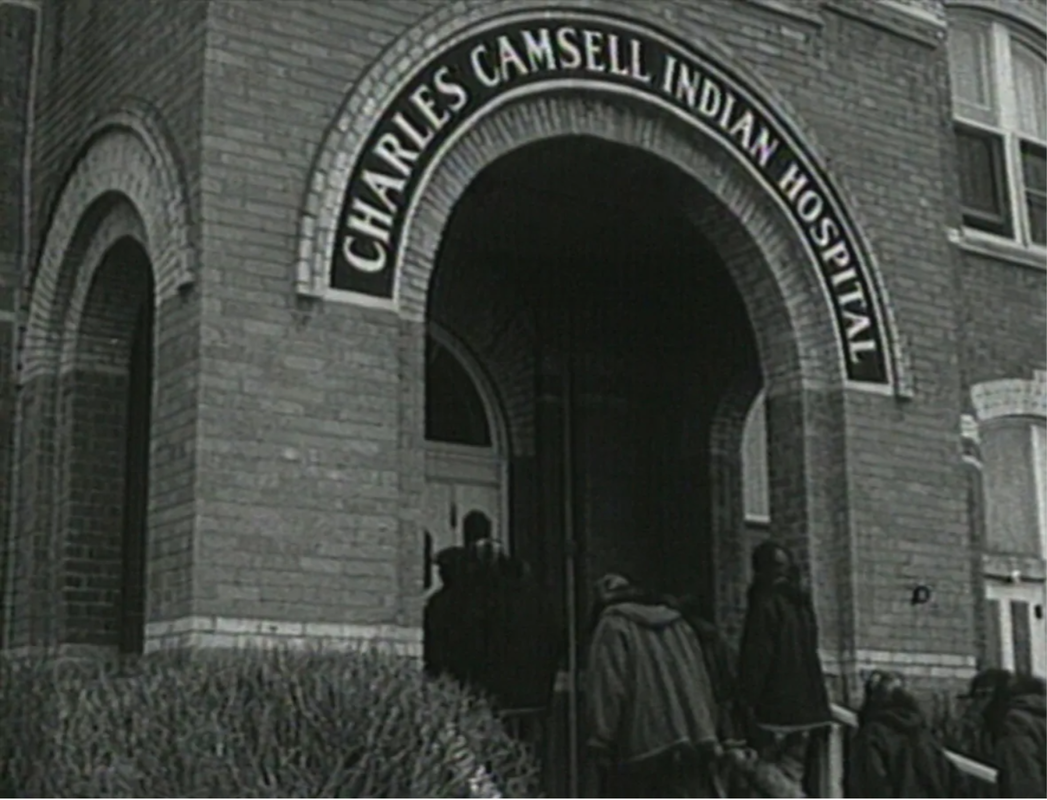|
By: Kayla Beren At a recent family dinner, the topic of Indigenous peoples in Canada came up. A member of my family spoke up, stating, “I don’t understand why we need to constantly be apologizing for the past. I don’t know why once isn’t enough.” I was thoroughly appalled and attempted to explain the horrors of residential schools and other ways that Indigenous people have been wronged throughout colonization. The reply I got was, “I don’t know why they can’t just forget about it”. My answer was “You wouldn’t either if it was your family”. One of the many horrors which Indigenous peoples have been forced to endure in Canada has been forced sterilization. This entails exactly what it sounds like. From 1928 until 1973, tubal ligations could be performed legally on individuals in Alberta and British Columbia who were deemed to be unfit [sic]. At a time when Indigenous peoples represented 2% of the Canadian population, they were subject to a disproportionate 25% of sterilizations. When tubal ligations are performed, the fallopian tubes are cauterized, leading to a permanent inability to conceive a child. Forced sterilizations are performed either when a female is sedated following pregnancy, or when the patient is unconscious. Therefore, many females were not aware that they had been sterilized or did not realize the full implications of their procedure until years later. ` When this procedure was legal, thousands of females were sterilized involuntarily. Although the numbers are hard to determine, there were over 2,000 documented cases in just Alberta when this procedure was legal. Furthermore, it is increasingly difficult to determine how many individuals were sterilized as this procedure also occurred in provinces where sterilization was illegal. For example, over 1,500 cases were linked to a single physician in Ontario, where the procedure wasn’t legal or promoted. Indigenous children could even be sterilized in residential schools at the discretion of the principal to avoid behavioural issues being replicated in future generations [sic]. For adults, it was not uncommon to be sterilized for simply not going to church and adhering to Western practices, although “eugenic laws were no prerequisite for involuntary sterilization” and many women underwent tubal ligation without a specific reason. Overall, it is estimated that several thousand Indigenous females have been inappropriately sterilized in Canada without their consent. In 1973, all laws permitting the forced sterilization of Indigenous females in Canada were officially repealed. Unfortunately, this did not halt the occurrence of forced sterilization in Canada. In 2017, a class action lawsuit was filed against the Canadian government in Saskatchewan, as 60+ Indigenous females who had been coerced or forced into sterilization by health providers in the last 30 years came forward. Since then, an increasing number of females have been coming forward, which may lead to more provinces being drawn in to the lawsuit. One woman has even come forward about an unwanted surgery that took place in 2018. Clearly, the forced sterilization of Indigenous females is not solely a topic to be read about in history books, but one that is harming people in contemporary healthcare. Canada’s ill-treatment of Indigenous females in regard to forced sterilization has even gained international attention. In 2018, the United Nations (UN) called for Canada to criminalize forced sterilization in hopes of limiting the occurrence of the procedure involuntarily. The lack of repercussions as a result of sterilizing another individual without consent allows those to continue violent action with no punishment. Involuntary tubal ligation exhibits a direct violation of the United Nation’s Convention against Torture. Forced sterilization also violates the Declaration of the Rights of Indigenous Peoples. To put things into perspective, it was the United Nation’s Committee Against Torture which recommended that Canada make legal changes to help stop the occurrence of forced sterilization. The international attention of Canada’s ill-treatment of Indigenous peoples exhibits how extreme the issue of forced sterilization is. As a white woman in Canada, I will be forever grateful for the privilege that I have. I am never worried about speaking with my physician, undergoing surgery or receiving healthcare in general. This article only summarizes the damage caused by forced sterilization of Indigenous females in Canada, which solely scratches the surface of what Indigenous peoples in our country have dealt with. It is difficult for me to fathom going through something as terrible as forced sterilization, and the physical, mental, and social implications of a procedure as invasive and inappropriate as this may cause/provoke. The next time someone asks, “Why are we still apologizing?” I implore you to think critically about the thousands of women who had their right to procreate stolen, whose bodily autonomy was disregarded, and who were considered unfit to create a family because of their culture and perceived race. This is solely one issue that has affected Indigenous peoples. The Canadian healthcare system has proven to be an institution that embodies systemic racism, and for that, we need change. References International Justice Resource Center. 2019. “FORCED STERILIZATION OF INDIGENOUS WOMEN IN CANADA.” Retrieved March 10, 2020 (https://ijrcenter.org/forced-sterilization-of-indigenous-women-in-canada/) Jean-Jacques, Amy and Sam Rowlands. 2018. “Legalised non-consensual sterilisation – eugenics put into practice before 1945, and the aftermath. Part 1: USA, Japan, Canada and Mexico.” The European Journal of Contraception & Reproductive Health Care23(2): 121-129. doi: 10.1080/13625187.2018.1450973 M.R.L.P. v. The Attorney General of Canada, 1485 (2017). Pegoraro, Leonardo. 2015. “Second-rate victims: the forced sterilization of Indigenous peoples in the USA and Canada.” Settler Colonial Studies 5(2): 161-173. doi: 10.1080/14623528.2015.1096589 Stote, Karen. 2012. “The Coercive Sterilization of Aboriginal Women in Canada.” American Indian Culture and Research Journal. 36(2): 117-150. United Nations. 1984. “Convention against Torture and Other Cruel, Inhuman or Degrading Treatment or Punishment” Retrieved November 5, 2020 (https://www.ohchr.org/Documents/ProfessionalInterest/cat.pdf) United Nations. 2008. “United Nations Declaration on the Rights of Indigenous Peoples.” Retrieved November 5, 2020 (https://www.un.org/esa/socdev/unpfii/documents/DRIPS_en.pdf) Photograph: https://www.cbc.ca/news/canada/north/forced-sterilization-lawsuit-could-expand-1.5102981
0 Comments
Your comment will be posted after it is approved.
Leave a Reply. |
Categories |


 RSS Feed
RSS Feed